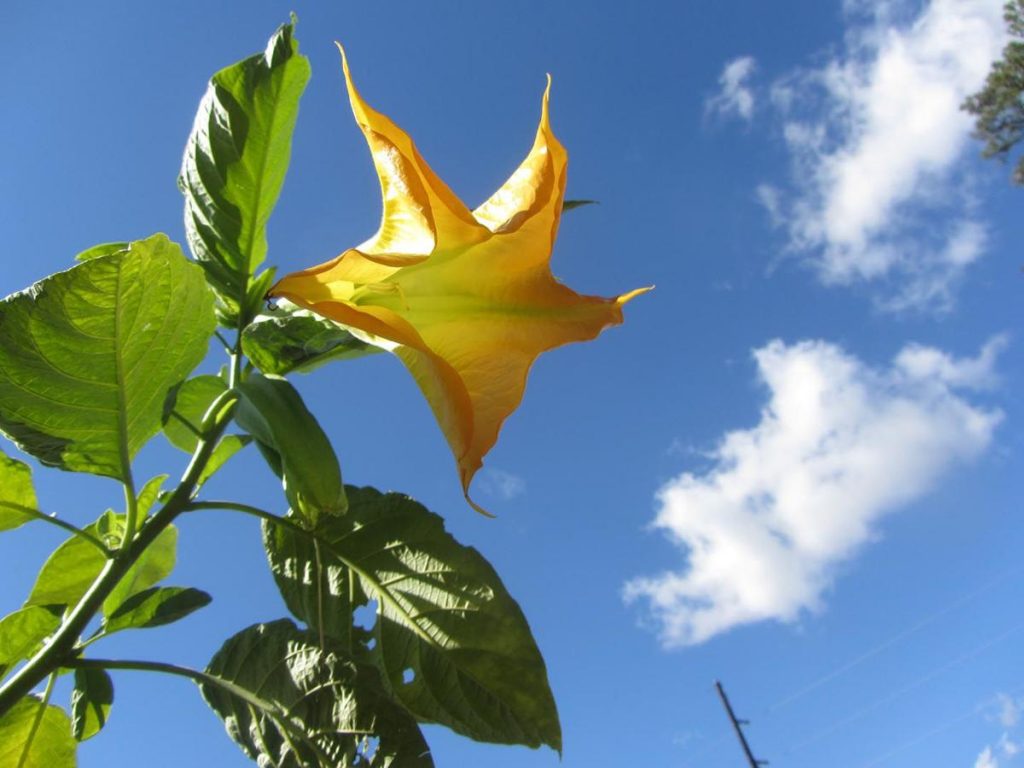
One of nature’s little jokes is that some of the most appetizing and delicious looking plants are highly-toxic to humans. Consequently, it’s important to be able identify species that are best to be avoided at all costs. Here’s a list of a few common, wild plants that should never find their way into our mouths and bellies.
Horse Nettle
Horse nettle belongs to the nightshade family, which is very toxic to humans. This plant produces greenish-yellow fruits that bear a resemblance to cherry tomatoes, and they can remain plump and juicy even if the plant has withered and dried up for the season. Ingesting these fruits can cause severe digestive problems and abdominal cramping, and they can also suppress our circulatory system. As a general rule of thumb, avoid anything that looks like a tomato in the wild as there are no known edible species in the continental United States.
Wild Cherry
Wild cherry trees may produce fruit that we’re accustomed to seeing in the produce section of grocery stores, but they are highly-toxic to humans and a number of other mammals. The leaves, stems and cherries contain high levels of cyanide. High concentrations of cyanide starve our cells of oxygen and literally cause our systems to shut down, and this can happen within minutes of exposure.
Nightshade (Belladonna)
Remember when Katniss and Peeta were contemplating eating nightshade berries as a way to commit suicide instead of being forced to kill each other in the first installment of the Hunger Games, or how the game master was forced to eat them due as a punishment for messing the games up? These delicious-looking black berries are loaded with toxins that wreak havoc on a number of systems in the body. They cause heart arrhythmia, convulsions and seizures, hallucinations, confusion, slurred speech and destroy the nervous system that ultimately leads to death. Make sure that you can differentiate between a safe and healthy blueberry bush and the nightshade plant so that you don’t accidentally ingest these delicious-looking berries by mistake.
Buckeye
People often confuse nuts from the buckeye tree with hickory or chestnuts, and accidentally consuming them can suppress the central nervous system that can lead to paralysis, destroy muscle coordination, cause profuse diarrhea and vomiting and ultimately lead to coma and death. The good news is that we need to eat a lot of buckeye nuts before toxins reach dangerous levels. However, even small doses can bring about mild to moderate symptoms, so it’s important to be able to identify and avoid consuming them by mistake.
Rhododendron
This green shrub is common through out the Eastern United States, and the leaves bear a close resemblance to bay leaves. However, they are highly toxic to humans, and Native Americans were so fearful of this plant that they coined it the suicide bush. Signs of poisoning include nausea, excess salivation, vomiting, dizziness, fatigue, difficulty breathing, heart failure and death. Fortunately, we would need to steep and drink the liquid from about ¼ pound of leaves before serious symptoms would appear, and another ½ pound or so for them to be life-threatening.
Holly
Feel free to deck the halls with boughs of holly, but make sure that you don’t accidentally eat the berries, no matter how inviting they may look. Eating just a few berries can cause severe diarrhea and vomiting which can lead to dehydration. They also have a powerful sedating effect that can suppress the nervous, respiratory and circulatory system. While deaths are rare, there have been some documented cases, but just falling ill will prove to be an unpleasant experience that’s best to be avoided.
These are just a few examples of common poisonous plants that we may be tempted to eat if we encounter them in the wild, and there are dozens more species out there that can be just as toxic. Make sure that you’re familiar with toxic species in your area, and learn how to identify them in order to avoid eating them by mistake.
